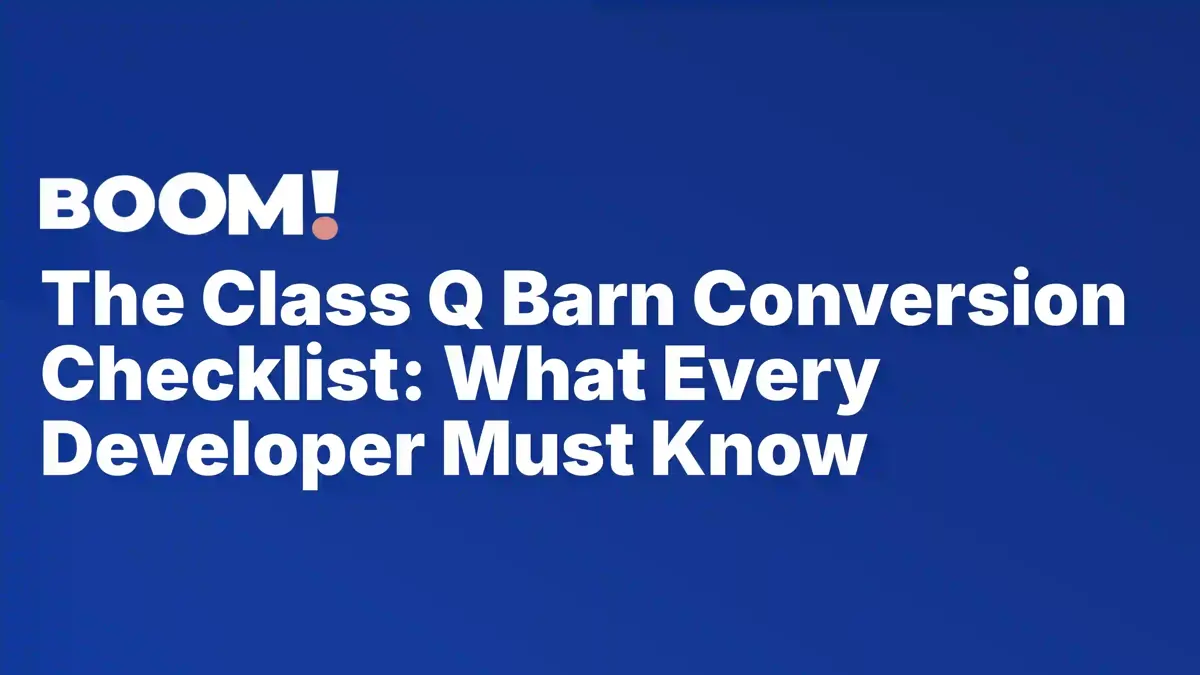The Class Q Barn Conversion Checklist: What Every Developer Must Know







If you’re looking at a barn and wondering, “Could I turn this into a home?” — don’t guess. Use this fast, field-ready checklist to spot Class Q-eligible opportunities and avoid costly dead ends.
1. Is the Building Eligible?
Existed before 24 July 2023
The barn must have physically existed on a working farm by this date. No recent new builds.
Used for agriculture
It must have been part of an established agricultural unit (not used as a workshop, storage, or commercial building).
Not extended or rebuilt recently
Significant changes after July 2023 can disqualify the site.
2. Is the Structure Sound?
Capable of conversion without rebuilding
The barn must be structurally solid. No full rebuilds allowed — get a structural survey to be sure.
No increase in size or height
Class Q allows changes like windows, doors, and interior fit-outs — but not expanding the building footprint.
Safe and legal access
There must be a way to reach the site by vehicle (and this must meet council highways standards).
3. Is the Location Allowed?
Not in a protected area
Class Q doesn’t apply in:
National Parks
Areas of Outstanding Natural Beauty (AONBs)
Sites of Special Scientific Interest (SSSIs)
Conservation Areas
World Heritage Sites
Not a listed building
Grade I/II/II* barns are excluded and require full planning.
No Article 4 restriction
Some councils remove Class Q rights locally.
4. Does It Fit the Development Limits?
No more than 10 homes on the farm
That’s the current Class Q cap per agricultural unit (since May 2024).
Total floor area under 1,000 m²
All dwellings combined must stay below this.
Each unit under 150 m²
Applies to homes created under the updated rules.
5. Can You Pass Prior Approval?
Class Q doesn’t mean “no planning” — you still need prior approval from the council for:
Highways and access — Is it safe and practical?
Noise — From nearby farms, roads, or businesses
Flood risk — Especially in low-lying rural areas
Design — Must look reasonable and fit the rural character
Pro tip: The more evidence you prepare (access plans, structural survey, ecology reports), the smoother your application.
Bonus Tip: Use BOOM! to Filter Class Q Sites Fast
BOOM! lets you scan thousands of rural plots and filter by:
Agricultural land
Existing buildings
Outside protected zones
Flood risks
You can now find Class Q opportunities in minutes, not weeks.
Use this checklist before you even step on-site — and you’ll instantly have an edge over most developers. The countryside is full of barns… but only a few are Class Q gold. This list helps you spot them first.
To find out how you can use BOOM! to source Class Q opportunities book a call with our CEO, Simon.